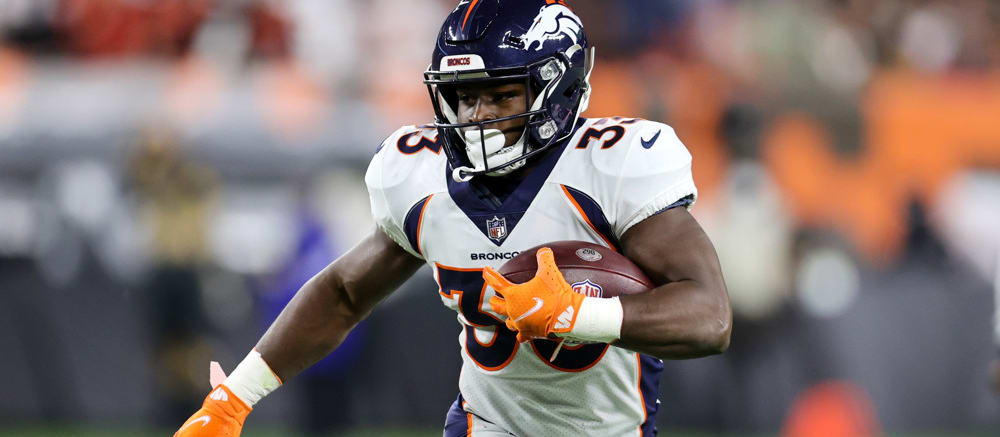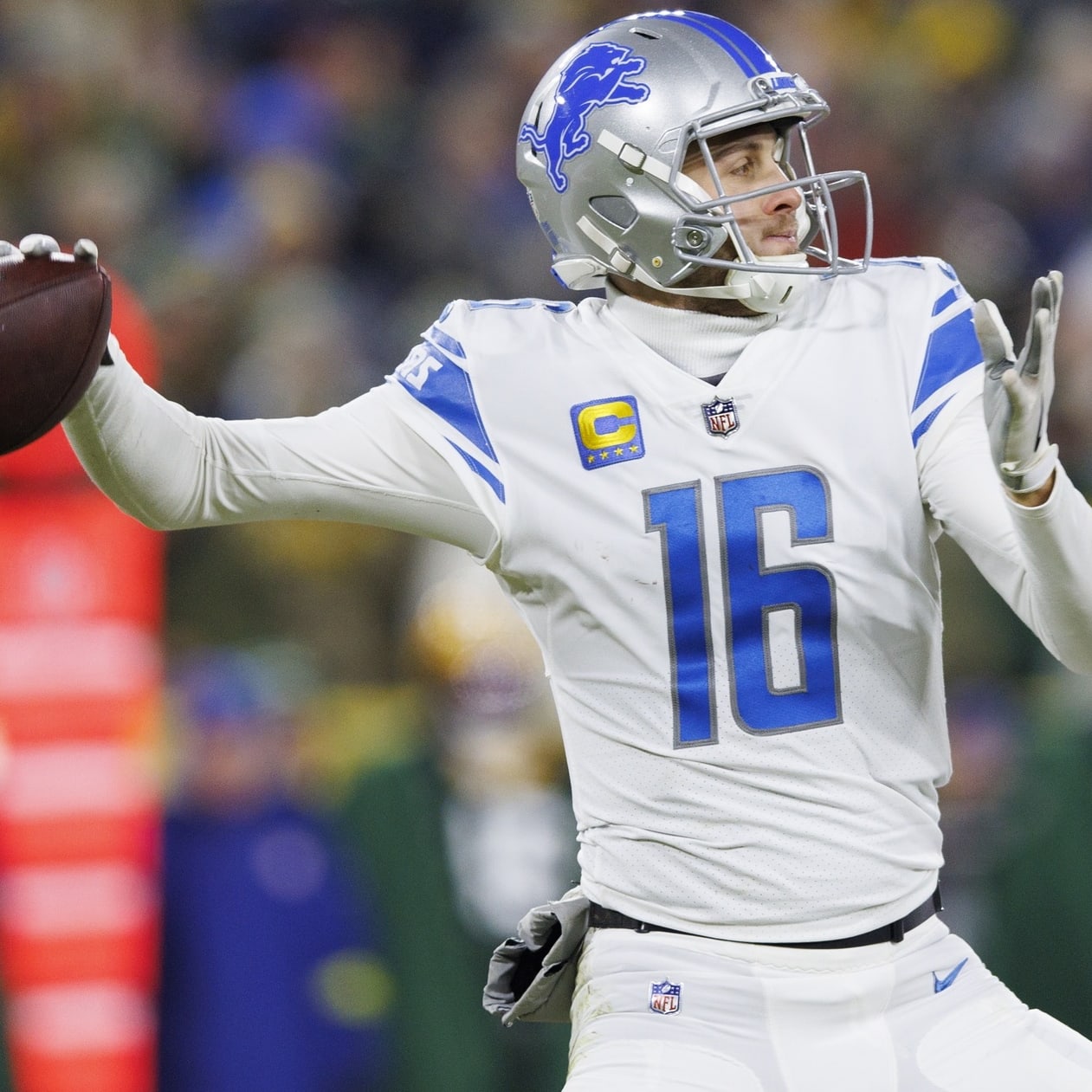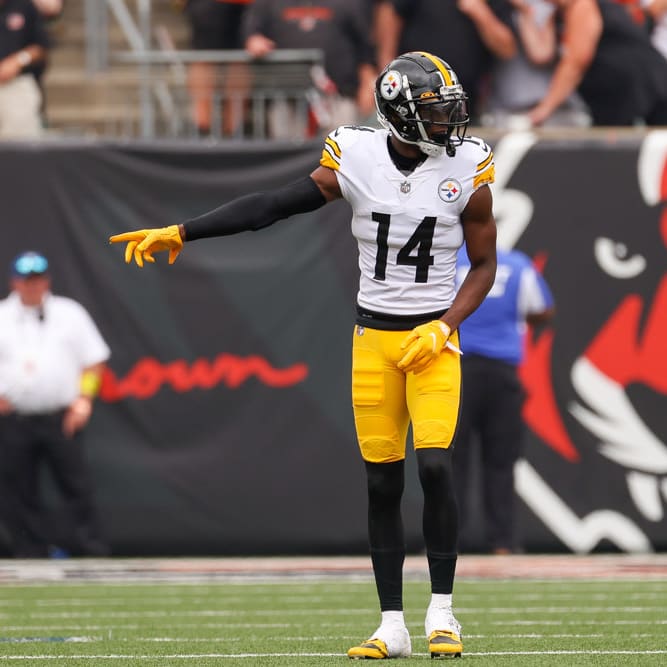This article is part of our Injury Analysis series.
The Broncos running back has been lost for the year after suffering a severe knee injury. Williams tore both the anterior cruciate ligament (ACL) and the lateral collateral ligament (LCL) in his knee when he was taken down at the start of the second half.
The knee is equipped with multiple stabilizing ligaments designed to protect the integrity of the joint. The list of ligaments includes the cruciate ligaments (ACL and PCL) and the collateral ligaments (MCL and LCL). The cruciate ligaments work together to limit excessive forward and backward motion of the lower leg bone (the tibia) on the upper leg bone (the femur). The collateral ligaments limit unwarranted side-to-side motion and stabilize the joint during lateral movement.
The lateral aspect of the knee is complex and includes the LCL as well as the iliotibial tract (IT band), the lateral meniscus, and several other tendons and ligaments. With these structures running into the capsule of the knee, the lateral aspect of the knee can be vulnerable to injury if loaded in the right direction with excessive force. While a force directed at the inside of the knee occurs less frequently than a force absorbed by the outside aspect of the knee, it can and has occurred with multiple players enduring multi-ligament tears in recent seasons. Ravens running back J.K. Dobbins is the most noteworthy, having suffered a torn ACL, LCL, lateral meniscus and hamstring in the final game of the 2021 preseason.
If we use Dobbins' recovery
The Broncos running back has been lost for the year after suffering a severe knee injury. Williams tore both the anterior cruciate ligament (ACL) and the lateral collateral ligament (LCL) in his knee when he was taken down at the start of the second half.
The knee is equipped with multiple stabilizing ligaments designed to protect the integrity of the joint. The list of ligaments includes the cruciate ligaments (ACL and PCL) and the collateral ligaments (MCL and LCL). The cruciate ligaments work together to limit excessive forward and backward motion of the lower leg bone (the tibia) on the upper leg bone (the femur). The collateral ligaments limit unwarranted side-to-side motion and stabilize the joint during lateral movement.
The lateral aspect of the knee is complex and includes the LCL as well as the iliotibial tract (IT band), the lateral meniscus, and several other tendons and ligaments. With these structures running into the capsule of the knee, the lateral aspect of the knee can be vulnerable to injury if loaded in the right direction with excessive force. While a force directed at the inside of the knee occurs less frequently than a force absorbed by the outside aspect of the knee, it can and has occurred with multiple players enduring multi-ligament tears in recent seasons. Ravens running back J.K. Dobbins is the most noteworthy, having suffered a torn ACL, LCL, lateral meniscus and hamstring in the final game of the 2021 preseason.
If we use Dobbins' recovery as a comparison, it seems plausible that Williams' rehab carries over into the 2023 season. Dobbins missed 393 days (12 months, 28 days), meaning Williams would likely miss multiple games next season, and seems like a possible candidate to begin the year on the IR. Williams could return ahead of that prediction, but given the severity of the injury, having him ready for the start of training camp seems less than ideal. Melvin Gordon will take over the Broncos, with Mike Boone moving up the depth chart.
The Dolphins quarterback suffered a scary injury last Thursday, four days after being cleared of a concussion in Week 3. Tagovailoa's head hit the turf in Cincinnati, and the quarterback's hands immediately went rigid as he displayed what is known as abnormal posturing. Posturing, including a type of positioning known as the fencing response, is a neurological motor response following a significant head injury, often to the brainstem. Any athlete displaying abnormal posturing is automatically removed from competition and placed in the league's concussion protocol. Still, the league's protocol is understandably under scrutiny following the incident, and the independent neurologist involved in Tua's Week 3 injury has been fired. Miami has already ruled out Tagovailoa for Week 5, and I'm guessing this keeps him sidelined for a while longer. The effects of concussions are cumulative, and having two potential head injuries in a five-day span is a serious problem. Teddy Bridgewater will be the starting quarterback in place of Tagovailoa.
Turf Burns
Keenan Allen: The Chargers continue to consider Allen day-to-day with his lingering hamstring strain. The wide receiver has not played since Week 1 and seemed to suffer a setback last week after being a limited participant in a handful of practices. Allen is a veteran receiver nursing an injury that is problematic for receivers, particularly aging ones. Even worse, one of the biggest risk factors for future hamstring strains is prior injury. Allen will need to display a stretch of sustained health before I would feel confident in utilizing him like normal.
Treylon Burks: The Titans wide receiver will be sidelined for the foreseeable future after being carted off the field with an injury later diagnosed as turf toe. Turf toe is a sprain of the stabilizing ligaments of the big toe that usually occurs with forced hyperextension. Turf toe is often slow to heal and can be very painful and limiting. Even worse, the injury is easily re-injured or aggravated, meaning Burks will return with an elevated level of injury risk. While surgery will not be needed, he remains without a definitive timetable.
Alvin Kamara: The Saint running back was a surprise scratch on Sunday, sitting out the team's loss to Minnesota in London. Kamara did not play in Week 2 after suffering a cartilage injury in his ribs but did manage to suit up against the Panthers in Week 3. His stat line was modest, and he entered Week 4 prep with a questionable designation before being ruled out shortly before the game. Clearly the ribs remain an issue, though the Saints may have been taking a conservative approach with his care with teammates Jameis Winston (back, ankle, and hip) and Michael Thomas (ankle) sidelined with injuries of their own. Both Winston and Thomas will likely be questionable again, and Kamara's status is equally unsure. Hopefully he can log a few practices in the week ahead and return against the Seahawks.
Cordarrelle Patterson: The Falcons will be without their lead back after Patterson was placed on the IR after undergoing an undisclosed procedure on his knee. Patterson was limited in the days leading up to Week 4 but was active against the Browns. However, he recorded just one carry in the second half and underwent the "minor" knee procedure on Monday. A knee scope seems likely, though it's hard to pinpoint a possible return without knowing more specifics. He will sit at least four weeks following the IR designation. Those invested here will need to closely monitor his level of participation in practice over the next month to get a better idea if this will require more than the allotted four weeks. Atlanta will use a running back by committee approach with Caleb Huntley and rookie Tyler Allgeier likely to see the majority of reps.
Jonathan Taylor: Taylor appears to have avoided a significant ankle injury after being injured in Sunday's loss to the Titans. The team said he has a chance to play against the Broncos, but Taylor is facing a time crunch with the game taking place Thursday. Taylor was already nursing a toe injury entering the Tennessee game, and this latest ailment is going to only compound the problem. Even if Taylor does suit up, it is hard to imagine he will be his usual self. Scale back your expectations if he is cleared in time to play.










